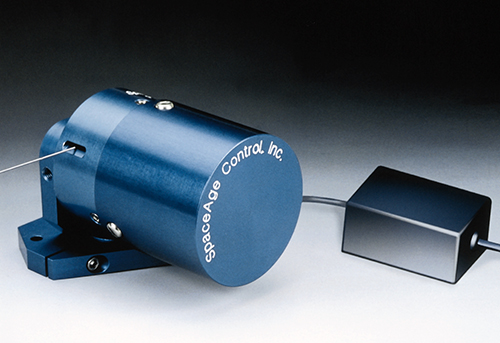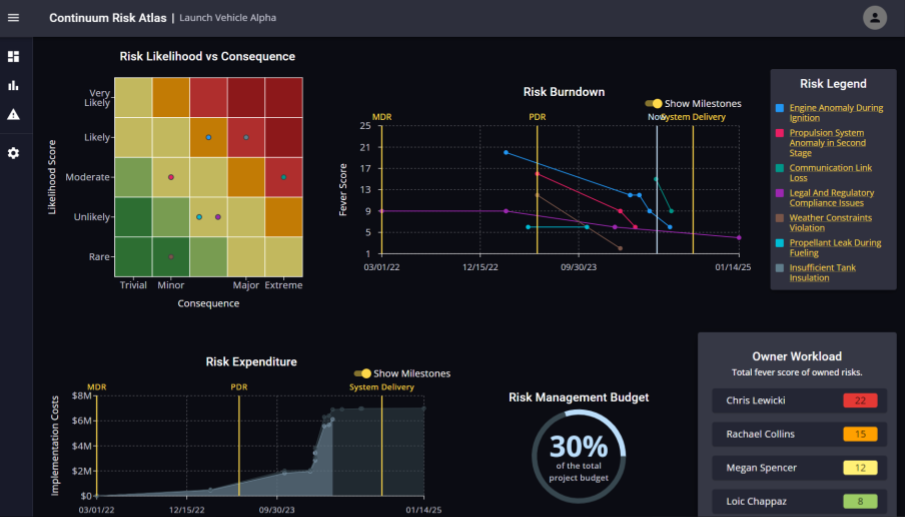Motion of a Moving Object
The knees of a crash test dummy and the controls of a high-performance test aircraft. One might be hard pressed to think of a connection, but there is one.
Technology built for space-based and experimental aircraft programs is now in use in industrial settings and automotive testing, as well as auto and motorcycle racing.
SpaceAge Control, Inc. of Palmdale, California was awarded a contract in 1970 to support flight test programs at NASA's Dryden Flight Research Center, situated at Edwards Air Force Base in California. Their job was to produce precision, small format and lighter weight position transducers for aircraft flight control testing. The role of a position transducer is to convert mechanical motion into an electrical signal that may be metered, recorded, or transmitted. They are used in a broad range of position, displacement, and velocity measurements. Output from a position transducer can be measured to discern the position, direction, or rate of motion of the moving object.
The first application of the company's miniature position transducer was in support of a NASA project to study the actions of an aircraft's rear stabilizer. Following this work, SpaceAge Control was awarded a NASA contract to fabricate devices for obtaining angle of attack, sideslip, and pressure information on test aircraft. Since that time, the company has designed similar devices in the form of air data booms, nose booms, or air data probes, for an assortment of flight test activities.
Demands by NASA and a number of U.S., Canadian, European, and Asian aerospace firms have yielded a complete line of SpaceAge Control state of-the-art, miniature and subminiature-sized position transducers.
Durability of the devices has proven to be yet another key attribute. When used properly, certain classes of the position transducers can outlast the vehicle being evaluated. Some models are rated to exceed 50 million cycles of operation.
One Indy auto racing team began tasking the firm's position transducers to monitor the engine throttle movement and suspension travel of their racers. Similarly, NASCAR race vehicles have used position transducers to measure the rear spoiler deflection during high-speed test runs. By quantifying the amount of spoiler deflection occurring, race engineers can stiffen the spoiler accordingly, thus reducing deflection to an acceptable level. Any spoiler deflection results in less downforce and a higher riding car with a slower top speed. A variety of position transducers can be tapped to unobtrusively record driver throttle, brake, clutch, and gear shift actions.
SpaceAge Control products have been useful in a number of auto test and measurement projects. One such assignment has been measuring the brutal forces on occupants as they are thrown about during vehicle crashes. Built into the knees of anthropomorphic dummies, special transducers measure dummy knee shear. This effect occurs when the tibia (shin bone) moves relative to the femur (upper leg bone). Important leg-related data have been accumulated by incorporating transducers into the crash test dummies. The devices convert mechanical leg movement into electrical signals for detailed analysis. Position transducers have also proven helpful in monitoring displacements of a dummy's thoracic cavity and rib cage area as they undergo the jarring motions of an auto accident.
From their early work supporting NASA research, SpaceAge Control products have been successfully applied to military fighter, attack, and cargo aircraft, helicopters, and in general aviation craft. In the ground vehicle and transportation area, the company has customized devices for passenger cars, earth moving equipment, bus and public transport, as well as recreational vehicles. Now providing products to hundreds of customers in twenty industries and over thirty countries, the company can boast of one more measurable property: success.

Small, lightweight, and durable transducers provide a range of position and velocity measurements. The devices have proven helpful in the air and ground transportation sectors.













